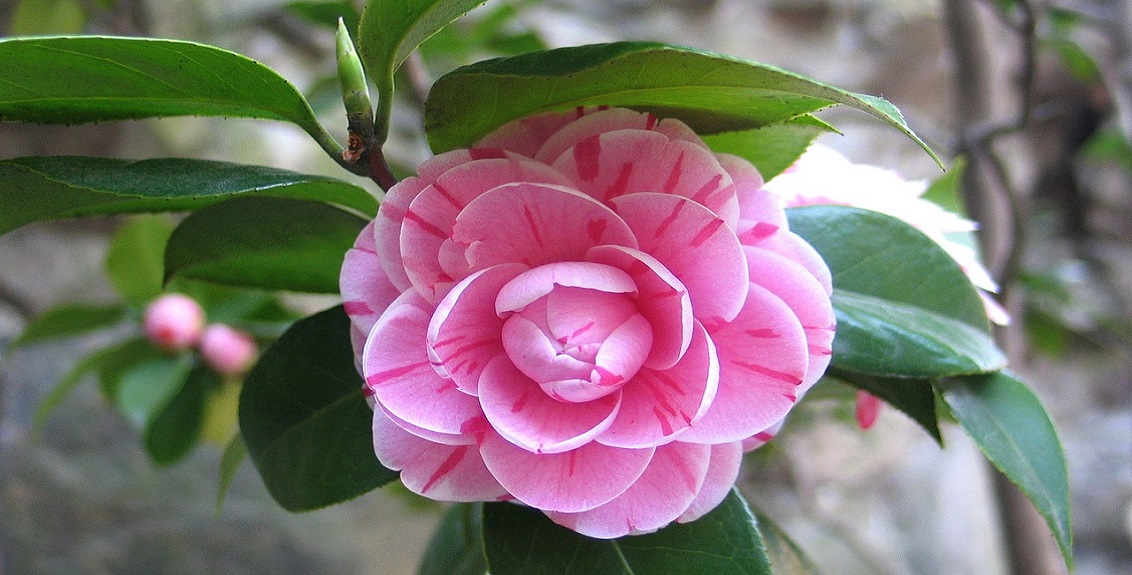Camellias
Camellias are acid loving ericaceous plants. This means that they can be successfully grown in all parts of the UK which do not have chalk. In chalky or limestone (i.e. alkaline) areas camellias can only be grown in containers filled with a peat based compost and watered with rainwater rather than tap water which may also have a lime content. This video shows you all you need to know about how to renovate & reinvigorate an old Camellia and features the part they never seem to show you on the TV gardening shows – how the plant really looked 6 months later!
Planting Tips
- Camellias can be grown in full sun, partial or even full shade. Dappled shade is perhaps ideal especially for white flowering forms. They can readily withstand the coldest winters and are fully hardy.
- They are tap rooting plants and grow very quickly. If planted in a windy area use a stake for the first few years as these evergreen plants can twist and break off at ground level in exposed positions. That is not to say that camellias cannot be planted in windy positions as many of the older more established varieties make excellent windbreaks.
- Camellias are best planted in the spring or autumn with some leaf mould, peat or farmyard manure incorporated into the planting pit ideally with a sprinkling of fertiliser.
Pruning
- Camellias are very hardy and resilient plants which can be lightly pruned at virtually any time of the year. However, unless you need to shape up a plant or perhaps clear a pathway there is absolutely no need to prune a camellia. In fact pruning is very likely to remove the best new growth which will produce the best of next year’s flowers.
- The ideal time to prune a camellia is just after flowering but immediately before the soft new growth emerges. In practise this means in April or early May.
- Elderly camellias may become a bit unevenly shaped and unsightly. If so it is perfectly possible or even desirable to prune them back to a hatstand with no foliage at all. Such drastic pruning would kill many plants but camellias can be successfully rejuvenated by drastic pruning of this sort. Within a very short time a mass of new shoots will appear from the old wood to create a vigorous new bush. A good feed of well rotted mature around the roots would also speed up the process.
Pests and Diseases
- Camellias are relatively free of pests and diseases and are particularly resistant to honey fungus.
- If you lose a rhododendron or another shrub in your garden from this disease then planting a camellia in its place rather than another similar shrub will overcome the problem.
